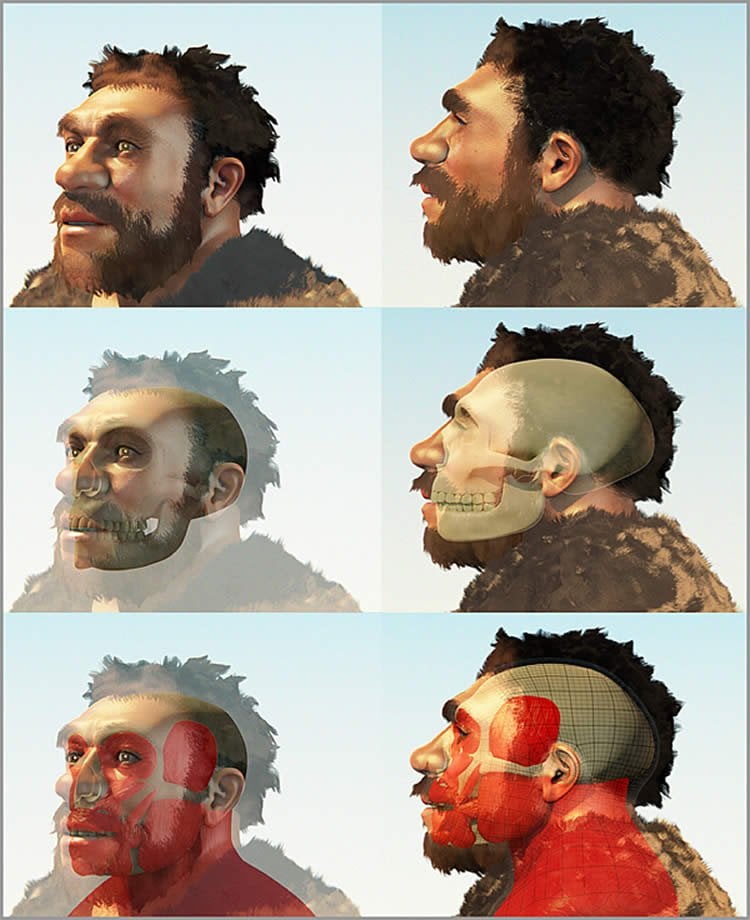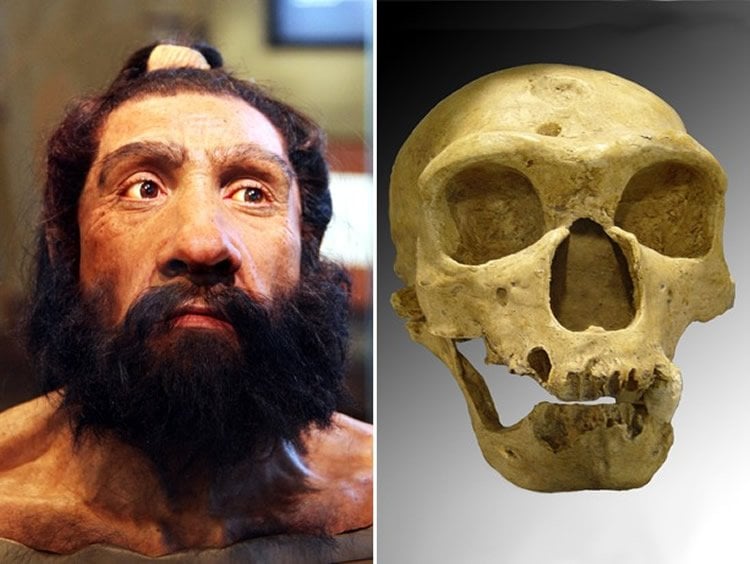Summary: Researchers report a specific gene structure emerged recently and with unprecedented speed.
Source: University of Washington.
Specific genetic structure emerged relatively recently, and with ‘unprecedented‘ speed, UW Medicine co-author says.
A structure that represents the biggest known genetic difference between humans and Neanderthals also predisposes humans to autism.
An international team of researchers led by UW Medicine genome scientist Evan Eichler published the findings today in Nature.
The structure involves a segment of DNA on chromosome 16 that contains 28 genes. This segment is flanked by blocks of DNA whose sequences repeat over and over.
Such stretches of duplicated DNA, called copy-number variants, are common in the human genome and often contain multiple copies of genes. Although most copy-number variants seem to have no adverse effect on health, some have been linked to disease.
However, when both strands of a segment of DNA are flanked by highly identical sequences, they can be susceptible to large copy-number differences, including deletion, duplication and other changes, during the process of cell division. In this case, deletion, which causes the loss of the segment’s 28 genes, results in autism.

In the new study, researchers determined that this structure, located at a region on chromosome 16 designated 16p11.2, first appeared in our ancestral genome about 280,000 years ago, shortly before modern humans, Homo sapiens, emerged. This organization is not seen in any other primate – not chimps, gorillas, orangutans nor the genomes of our closest relatives, the Neanderthals and Denisovans. Yet today, despite the fact that the structure is a relatively new genetic change, it is found in genomes of humans the world over.
“Most duplications in our genome are millions of years old, and the speed at which this structure transformed our genome is unprecedented,” said co-author Eichler, a professor of genome sciences and an investigator of the Howard Hughes Medical Institute.
“The wide and rapid distribution of these copy-number variants suggests the genes within the repetitive sections confer benefit that outweigh the disadvantages that come with the increased risk of autism in some offspring, should deletion occur.”
Copy-number variants may play an important role in human evolution because, as a species, we are relatively uniform genetically.
“If you took two chimps out of the wild, they would have twice as many genetic differences in their genomes than you would see between two humans. And orangutans have three times as many differences.
Having these structures means we have a way to radically restructure our genome over a very short time frame, bringing about changes that might otherwise take hundreds of millions of years of evolution to acquire – but at the cost of an increased risk of autism and other neuropsychiatric disorders,” he said.
One benefit of copy-number variants: They contain multiple copies of genes that can mutate and acquire new, potentially useful functions.

Of particular interest to the researchers was a gene in the copy-number variants at 16p11.2 called BOLA2, multiple copies of which were found in both flanking regions. The BOLA2 protein in human cells appears to form a complex with another protein, called glutaredoxin 3, that allows the cells to capture iron more efficiently and make it available to proteins that require it. This effect appears to be most pronounced early in cell development.
“This ability to help humans to acquire and use this essential element early in life might confer a significant enough benefit to outweigh the risk of having some offspring with autism,” Eichler said.
In addition to BOLA2, the mutations within the copy number variant regions appears to have created new protein formed by fusing two regions of the BOLA2 gene with three regions of another gene. This new gene may be the first completely new gene that distinguishes humans from our Neanderthal and ancient hominin cousins, Eichler said. Exactly what role the new protein it creates plays remains unknown. “We’re going to work with other research teams to find out what it does but so far we haven’t a clue.”
Funding: This work was supported by the Paul G. Allen Foundation, the Simons Foundation Autism Research Initiative, the U.S. National Institutes of Health (2R01HG002385, TR01 MH0957410), National Institute of Mental Health grant 1F30MH105055-01, the Swiss National Science Foundation, Helmsley Charitable Fund, the Mathers Foundation, and the JPB Foundation U.S. National Science Foundation (DGE-1256082), Ente Cassa di Risparmio.
Source: Robert Sanders – University of Washington
Image Source: This NeuroscienceNews.com images are adapted from the University of Washington press release.
Original Research: Abstract for “Emergence of a Homo sapiens-specific gene family and chromosome 16p11.2 CNV susceptibility” by Xander Nuttle, Giuliana Giannuzzi, Michael H. Duyzend, Joshua G. Schraiber, Iñigo Narvaiza, Peter H. Sudmant, Osnat Penn, Giorgia Chiatante, Maika Malig, John Huddleston, Chris Benner, Francesca Camponeschi, Simone Ciofi-Baffoni, Holly A. F. Stessman, Maria C. N. Marchetto, Laura Denman, Lana Harshman, Carl Baker, Archana Raja, Kelsi Penewit, Nicolette Janke, W. Joyce Tang, Mario Ventura, Lucia Banci, Francesca Antonacci, Joshua M. Akey, Chris T. Amemiya, Fred H. Gage, Alexandre Reymond and Evan E. Eichler in Nature. Published online August 3 2016 doi:10.1038/nature19075
[cbtabs][cbtab title=”MLA”]University of Washington. “Human-Neanderthal Gene Variance is Involved in Autism.” NeuroscienceNews. NeuroscienceNews, 4 August 2016.
<https://neurosciencenews.com/neuroscience-evolution-genetics-autism-4778/>.[/cbtab][cbtab title=”APA”]University of Washington. (2016, August 4). Human-Neanderthal Gene Variance is Involved in Autism. NeuroscienceNews. Retrieved August 4, 2016 from https://neurosciencenews.com/neuroscience-evolution-genetics-autism-4778/[/cbtab][cbtab title=”Chicago”]University of Washington. “Human-Neanderthal Gene Variance is Involved in Autism.” https://neurosciencenews.com/neuroscience-evolution-genetics-autism-4778/ (accessed August 4, 2016).[/cbtab][/cbtabs]
Abstract
Emergence of a Homo sapiens-specific gene family and chromosome 16p11.2 CNV susceptibility
Genetic differences that specify unique aspects of human evolution have typically been identified by comparative analyses between the genomes of humans and closely related primates1, including more recently the genomes of archaic hominins2, 3. Not all regions of the genome, however, are equally amenable to such study. Recurrent copy number variation (CNV) at chromosome 16p11.2 accounts for approximately 1% of cases of autism4, 5 and is mediated by a complex set of segmental duplications, many of which arose recently during human evolution. Here we reconstruct the evolutionary history of the locus and identify bolA family member 2 (BOLA2) as a gene duplicated exclusively in Homo sapiens. We estimate that a 95-kilobase-pair segment containing BOLA2 duplicated across the critical region approximately 282 thousand years ago (ka), one of the latest among a series of genomic changes that dramatically restructured the locus during hominid evolution. All humans examined carried one or more copies of the duplication, which nearly fixed early in the human lineage—a pattern unlikely to have arisen so rapidly in the absence of selection (P < 0.0097). We show that the duplication of BOLA2 led to a novel, human-specific in-frame fusion transcript and that BOLA2 copy number correlates with both RNA expression (r = 0.36) and protein level (r = 0.65), with the greatest expression difference between human and chimpanzee in experimentally derived stem cells. Analyses of 152 patients carrying a chromosome 16p11.2 rearrangement show that more than 96% of breakpoints occur within the H. sapiens-specific duplication. In summary, the duplicative transposition of BOLA2 at the root of the H. sapiens lineage about 282 ka simultaneously increased copy number of a gene associated with iron homeostasis and predisposed our species to recurrent rearrangements associated with disease.
“Emergence of a Homo sapiens-specific gene family and chromosome 16p11.2 CNV susceptibility” by Xander Nuttle, Giuliana Giannuzzi, Michael H. Duyzend, Joshua G. Schraiber, Iñigo Narvaiza, Peter H. Sudmant, Osnat Penn, Giorgia Chiatante, Maika Malig, John Huddleston, Chris Benner, Francesca Camponeschi, Simone Ciofi-Baffoni, Holly A. F. Stessman, Maria C. N. Marchetto, Laura Denman, Lana Harshman, Carl Baker, Archana Raja, Kelsi Penewit, Nicolette Janke, W. Joyce Tang, Mario Ventura, Lucia Banci, Francesca Antonacci, Joshua M. Akey, Chris T. Amemiya, Fred H. Gage, Alexandre Reymond and Evan E. Eichler in Nature. Published online August 3 2016 doi:10.1038/nature19075






